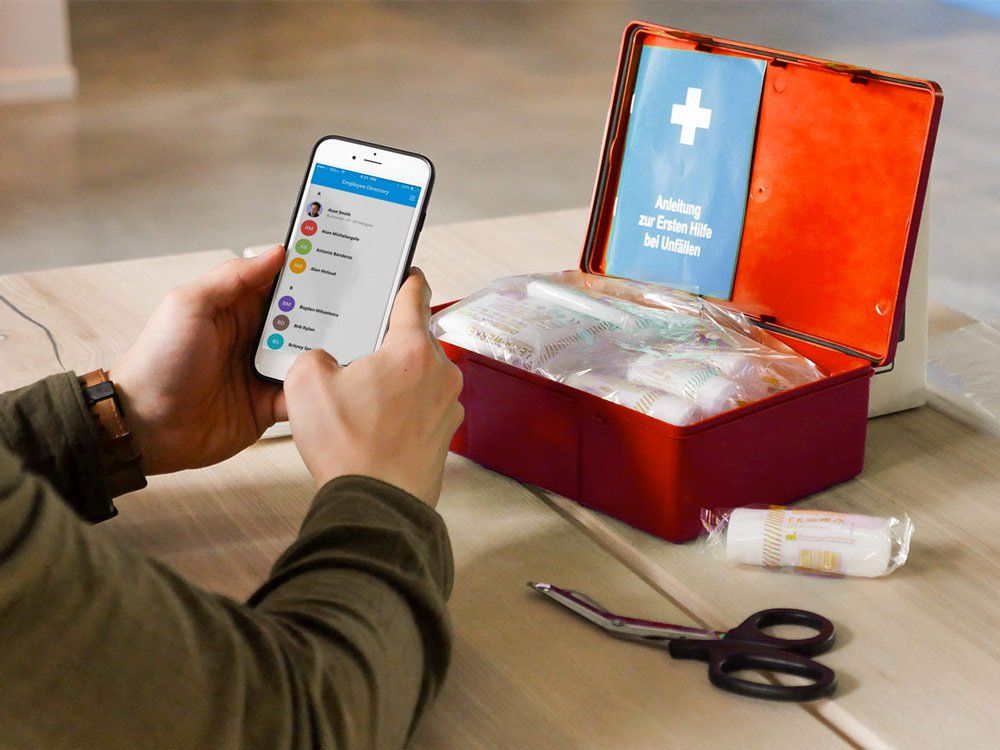10 Ways to Boost Workplace Safety Culture with an Employee App

For employees in the Energy and Utilities sector, a strong workplace safety culture is of vital importance. It increases the efficiency of ongoing operations, manages risk, optimizes control systems, streamlines processes, enhances the employer brand, and creates trust. Ultimately, it helps to prevent injuries and accidental deaths.
In fact, SmartMarket Report states that an improved safety culture decreases reportable injuries by 10%, increases the ability to contract new work by 10%, and increases the ability to retain staff by 18%.
Especially during the time of coronavirus, 35% of deskless workers said their employer didn’t provide adequate training or direction on how to perform their job during the pandemic.
A strong safety culture along with an effective tool to deliver your messages about safety have never been more important or more in demand by your employees.
Creating a healthy Safety Culture
As published by the Health and Safety Commission, a safety culture is “the product of people’s values and beliefs, their behavior, and their commitment to your health and safety programs.”
But how does this concept reveal itself in our daily working lives? Safety culture is the group effort of an organization to keep and maintain safety and prevent injuries on a day-to-day basis. This includes measures taken, the involvement of your employees, the communication concerning safety, and the degree of importance that it is given within an organization.
The responsibility to uphold and drive this culture has become an integral part of management functions, but it must be cultivated by every single employee. While the C-level is responsible for setting a framework and providing the tools needed, internal communicators are responsible for implementing the processes and ensuring everyone is aware of the rules and regulations in the workplace.
To begin creating an efficient safety culture, the OSHA (Occupational Safety and Health Administration of the US Department of Labor) recommends that you:
Enforce accountability: Create a process that holds everyone accountable for being visibly involved, especially managers and supervisors. They are the leaders who promote positive change.
Provide multiple options: Provide different options for employees to bring their concerns or issues forward. There should be a chain of command to ensure that supervisors are held accountable for being responsive.
Report, report, report: Educate employees on the importance of reporting injuries, first aids, and near misses. Prepare for an increase in incidents if currently there is under-reporting. It will eventually level out.
Rebuild the investigation system: Evaluating the incident investigation system is critical to making sure investigations are conducted effectively. This should help you identify the primary causes of incidents and accidents.
Build trust: When things start to change in the workplace, it’s important to keep the boat from rocking too much. Building trust will help everyone work together to see improvements.
Celebrate success: Make your efforts public to keep everyone motivated and updated throughout the process.
In poor safety cultures, only 60% of workers are willing to report unsafe conditions in the workplace, compared to 95% in organizations with an excellent safety culture.
Successful safety culture improvement requires regular, facility-wide communication about health and safety topics. An internal safety communication process increases awareness about such topics and transfers knowledge that empowers your people to be safe and successful.
Staffbase customers manage crises with an employee app by:
Sending push notifications for crucial, time-sensitive announcements
Creating trusted global and regional news feeds
Sharing public information from relevant sources (the World Health Organization, government agencies, etc.)
Building directories of important emergency contacts
Informing employees about proper hygienic practices
Providing dedicated pages for crucial information
Activating an acknowledgement function to ensure important information gets read
Localizing specific messaging to targeted groups
Providing structured feedback channels
Distributing forms for submitting employee questions
Opening article publishing for both top-down and peer-to-peer information sharing
Posting videos and photographs showing useful tips for safe work practices
Sharing FAQs that free communicators from time-consuming emails and phone calls
Publishing protocols for when and how to report to a medical point-person in the event of illness
1. Share your company’s safety vision and show that the issue is important to management
When it comes to safety culture, everyone should act in concert concerning goals and objectives. This means that although leaders should communicate their commitment to safety through their actions, every employee should be empowered to take part in the safety culture. Consider asking for C-Suite buy-in with a short written or video message, sharing photos of site visits, or maintaining transparency with easily accessible external audits.
2. Make emergency contacts easy to find
Split your safety process into clearly defined roles and responsibilities. Assign these tasks and make it easy for everyone to find the right contact person in case of emergencies and safety incidents. Leveraging an employee app allows your employees to walk around with an active, up-to-date directory in their back pockets.
3. Share site- or team-specific safety messages
Share your local safety vision, local key policies, goals and measures — and target content in order to limit the information employees receive and show them what’s currently relevant to them. An advanced employee app like Staffbase will allow you to define user groups and provide them with relevant content.
Download the full guide to continue learning how you can boost your workplace safety culture with an employee app.









